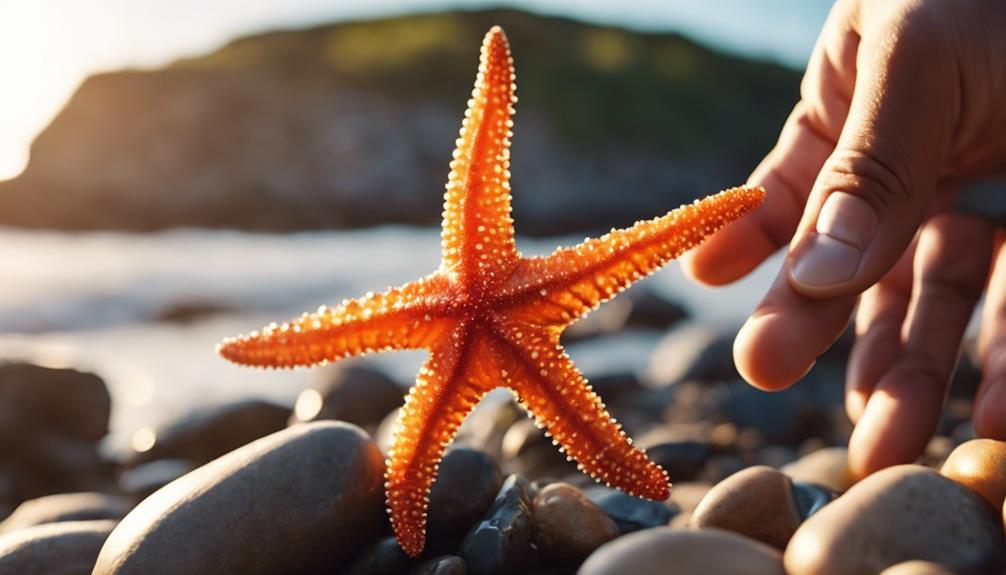Touching a starfish is typically safe, but be cautious and steer clear of starfish with toxic defense mechanisms. Some species, such as the crown-of-thorns starfish, can have venomous spikes that may cause harm if mishandled. Always practice caution when approaching starfish to avoid any potential risks. Remember, there are safety measures you can take to guarantee a positive interaction with these captivating sea creatures.
Starfish Toxicity Overview
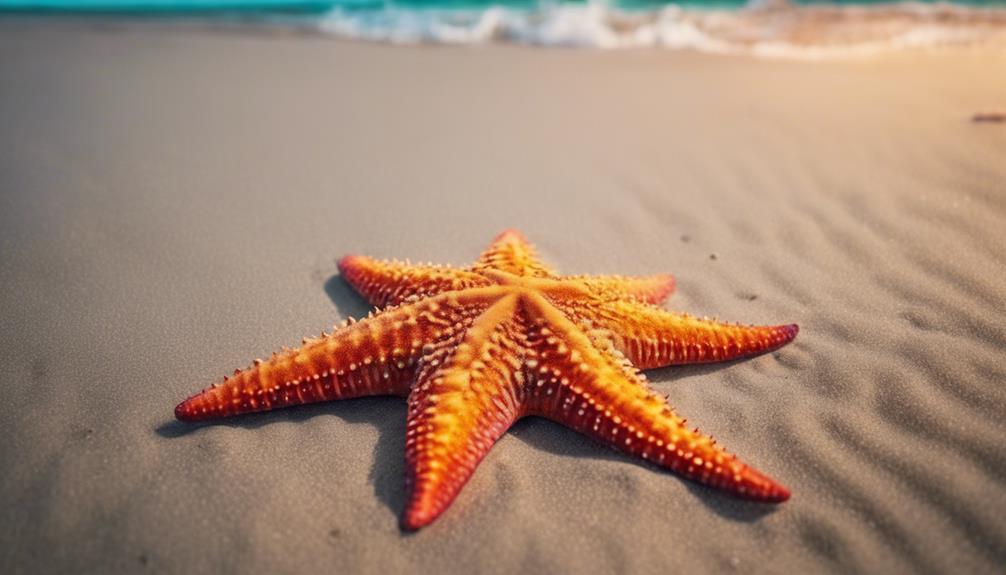
When considering starfish toxicity, it's important to be aware that not all sea stars possess poisonous attributes. While some starfish are toxic, only a few species have venom that can be harmful to humans.
The crown-of-thorns starfish, in particular, is known for its toxic venom, which it uses for self-protection. This species has venomous spikes that can pierce through diving suits, causing symptoms like nausea, swelling, and pain if stung.
It's essential to exercise caution when encountering starfish, especially those with venomous attributes like the crown-of-thorns. If you come into contact with a poisonous starfish, it's advisable to seek medical attention promptly to address any potential adverse reactions.
Risks of Touching Starfish
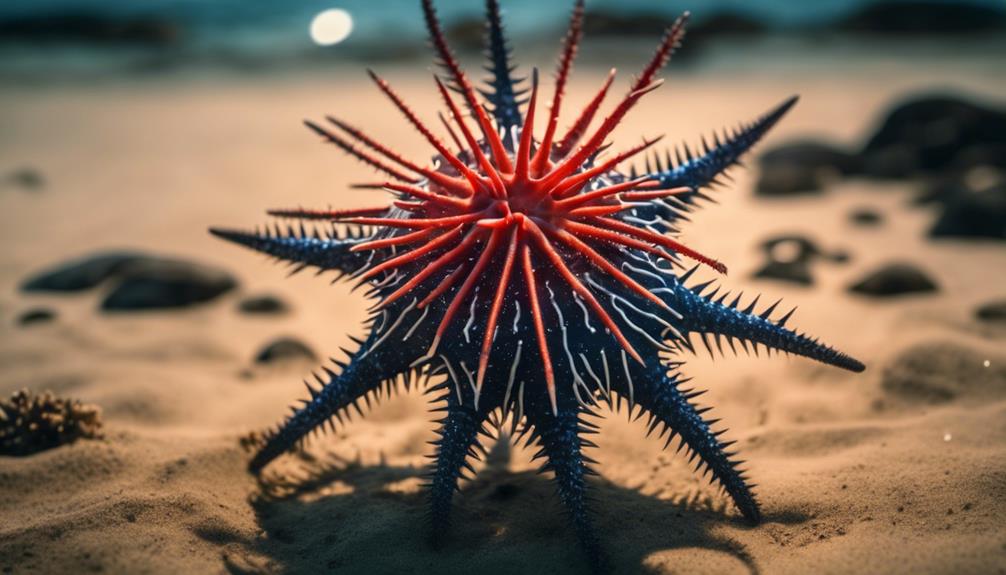
Touching a starfish can pose potential risks due to their prickly arms and venomous spikes, especially if not handled by professionals. Starfish have tiny spikes along their arms that can puncture the skin, causing pain and potential injuries. These spikes can also inject venom, leading to symptoms like swelling, nausea, and discomfort.
If mishandled, starfish may react defensively, potentially harming you with their spines. Caution should be exercised when approaching starfish and avoid touching them unless necessary. Professionals trained in handling marine life can safely interact with starfish using protective gear.
Remember that starfish are delicate creatures, and removing them from their natural habitat can cause stress and harm. By refraining from touching starfish and leaving their interactions to experts, you can help ensure the safety of both yourself and these fascinating sea creatures.
Starfish Injuries and Treatment
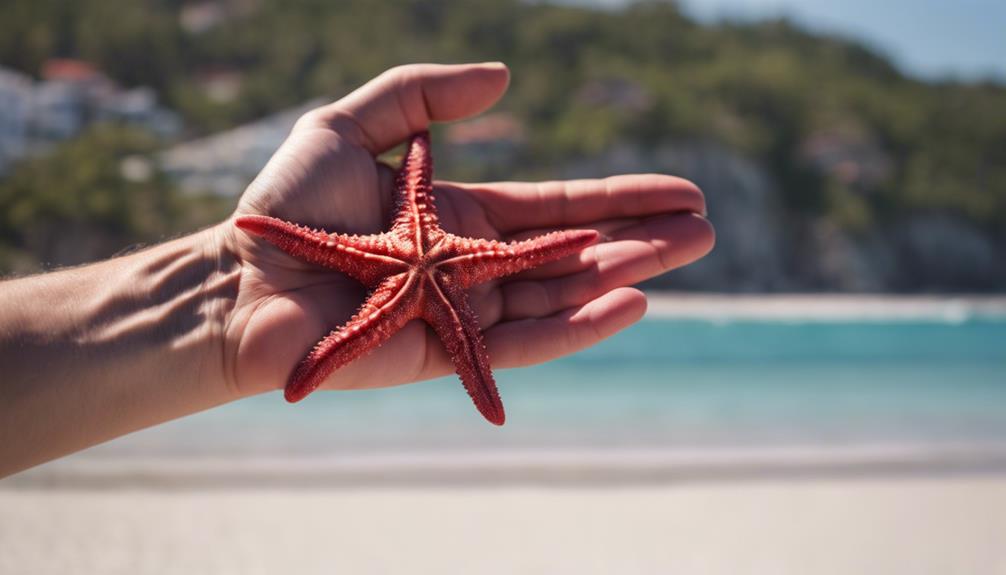
In case of starfish injuries, immediate medical attention may be necessary to address any potential complications. Starfish can physically hurt you through accidental punctures from their spikes, which may lead to injuries and pain if your skin is punctured.
Some starfish use venom for defense against predators, with the crown-of-thorns species being a common example. Scientists intervene to control the crown-of-thorns starfish population, as their venom is also utilized to protect coral reefs.
While starfish injuries are treatable and not fatal, lifting them out of the water can cause them to die due to their breathing mechanism. These creatures, though not inherently dangerous, can get stressed by touch and accidentally injure humans with their spines.
Remember that starfish venom isn't lethal but can cause uncomfortable side effects, so it's crucial to handle them with care and seek proper treatment if you experience a sting.
Understanding Starfish Behavior
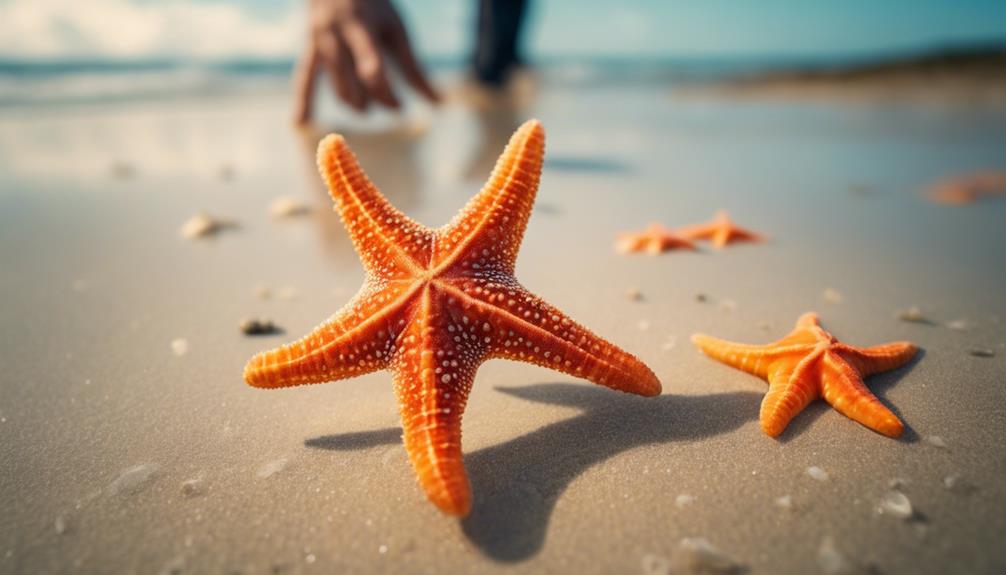
To understand starfish behavior, it's important to recognize that these creatures, though not aggressive, can inadvertently cause harm if mishandled. Starfish don't see humans as prey or predators, but they can accidentally injure you with their spines.
When taken out of the water, starfish can die due to poisoning from fresh air. While their venom isn't lethal, it can lead to uncomfortable side effects if you come into contact with it. It's vital to be cautious when interacting with starfish to avoid unintentional injuries.
Understanding how starfish behave can help prevent accidents and guarantee both your safety and the well-being of these fascinating creatures. Remember to handle starfish gently and return them to the water promptly to prevent any harm to them.
Safety Measures for Starfish Interaction
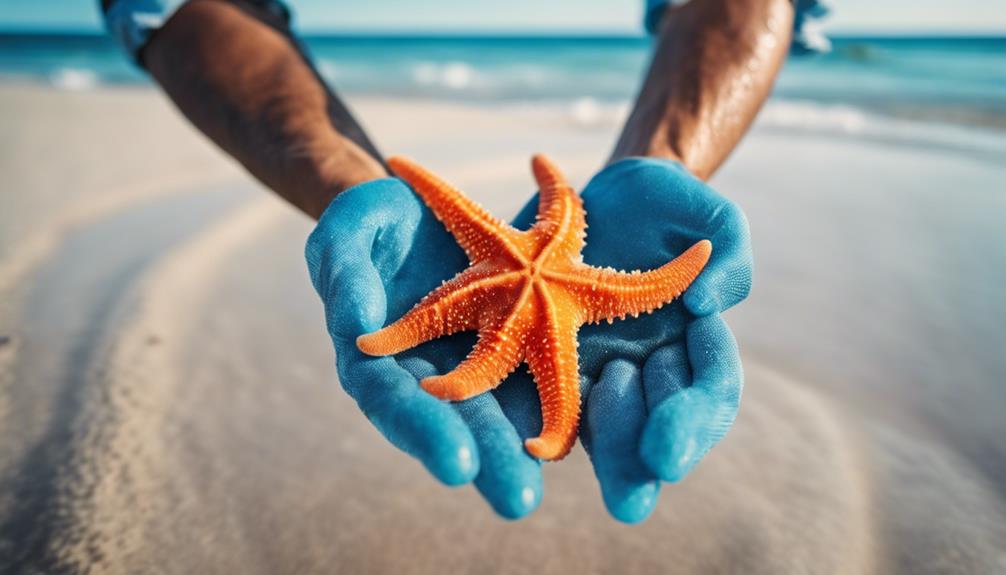
For safe interaction with starfish, always wear protective gloves to prevent accidental stings from their venomous spikes. When handling starfish, be cautious of their prickly arms and potential venomous spikes. Only professionals should handle starfish to minimize stress on these creatures, especially subtidal species.
It's vital to avoid taking starfish out of the water, as this can lead to limb loss for the starfish or even hair loss for you. Remember that starfish can die if not returned promptly to the water after being touched. In case of skin contact, be aware that some starfish have venomous spikes that may cause discomfort. To safeguard yourself and the starfish, refrain from touching them directly with bare hands.
Promoting Starfish and Human Coexistence
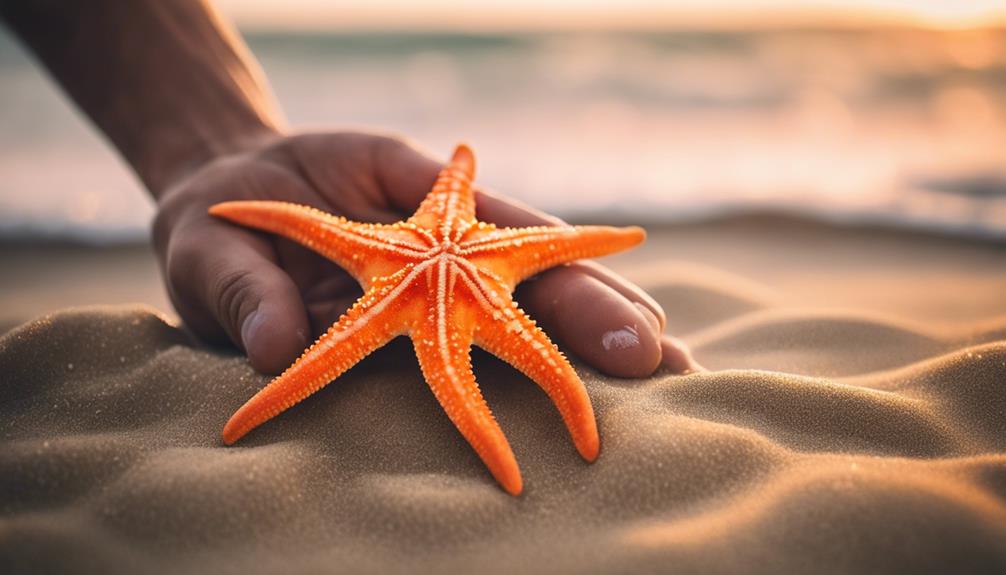
Consider implementing cautionary measures when engaging with starfish to foster a harmonious coexistence between humans and these fascinating marine creatures. Respecting starfish habitats and behaviors is key to promoting safety for both parties. Avoid lifting starfish out of the water, as they rely on it for oxygen and support.
If you come into contact with a starfish, handle it gently and avoid touching their spiky arms to prevent stress or injuries. Professionals equipped with protective gear are best suited to handle starfish to minimize harm to both humans and the creatures.
Educating others about the importance of preserving starfish environments and refraining from actions that may harm them is essential for ensuring their well-being. By understanding and respecting the boundaries of these unique animals, you can enjoy observing them in their natural habitats while promoting a mutually beneficial relationship between starfish and humans.

Erzsebet Frey (Eli Frey) is an ecologist and online entrepreneur with a Master of Science in Ecology from the University of Belgrade. Originally from Serbia, she has lived in Sri Lanka since 2017. Eli has worked internationally in countries like Oman, Brazil, Germany, and Sri Lanka. In 2018, she expanded into SEO and blogging, completing courses from UC Davis and Edinburgh. Eli has founded multiple websites focused on biology, ecology, environmental science, sustainable and simple living, and outdoor activities. She enjoys creating nature and simple living videos on YouTube and participates in speleology, diving, and hiking.
🌿 Explore the Wild Side!
Discover eBooks, guides, templates and stylish wildlife-themed T-shirts, notebooks, scrunchies, bandanas, and tote bags. Perfect for nature lovers and wildlife enthusiasts!
Visit My Shop →
